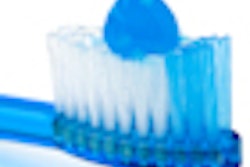
The relationship between periodontal disease and cardiovascular disease (CVD) is a complicated one. While many studies have suggested that the presence of periodontal disease may be associated with CVD, others have not confirmed this association.
Now a new study to be presented next month at the International Association for Dental Research (IADR) conference in San Diego has found that periodontal disease can contribute to occurrences of acute myocardial infarction (AMI).
Few studies have focused on the associations between periodontal disease and AMI, and in many of them there has been a series of methodological limitations, lead author Isaac Suzart Gomes-Filho, PhD, of Feira de Santana State University in Brazil told DrBicuspid.com. These limitations include selection bias among the cases and controls, low quality of CVD diagnosis, and insufficient control over potential confounding factors.
"The aim of our study was to estimate the possible association between periodontal disease and AMI, using robust methodology that would avoid the limitations of previous studies," he said.
In a case-control study conducted in Salvador, Brazil, Gomes-Filho and his colleagues looked at 621 subjects: 207 cases, 207 hospital controls, and 207 community controls. They matched cases with proven clinical and laboratory diagnoses of a first acute myocardial infarct event and controls without any history of acute myocardial infarct according to sex and age.
All the cases and controls underwent a complete periodontal examination; lipid and blood glucose profile tests; and weight, height, hip, and waist circumference measurements. They also filled out a questionnaire on sociodemographic and lifestyle habit conditions.
Individuals with periodontal disease had a greater chance of presenting with AMI than those without periodontal disease, for both the community controls and the hospital controls, the researchers found. After adjusting for age, sex, smoking habit, schooling level, and blood glucose level, they found this chance increased for both control groups.
Calculating the total risk attributable to periodontal disease and comparing the case group and community control group, the researchers found that about 10 of every 100 cases of AMI would be exposed to periodontal disease. Comparing the case group and hospital control group, they found that 15 of every 100 cases would be exposed to periodontal disease, Gomes-Filho explained.
"Thus periodontal disease would explain 17.8% and 24% of the risk of AMI in the population investigated," he said. "In other words, controlling periodontal disease might have an important impact on reducing AMI among these individuals or among others under similar conditions."
The methodological care defined in designing and implementing the study, and the fact that the results were similar in the two analyses using different control groups, strongly suggests that periodontal disease is associated with occurrences of AMI among this study population, Gomes-Filho added.
Conflicting opinions
These findings add weight to other research in this area, according to Linda Humphrey, MD, MPH, of the Veterans Affairs Medical Center in Portland, OR, who has done similar research (Journal of General Internal Medicine, December 2008, Vol. 23:12, pp. 2079-2086).
"I think the findings argue for the importance of good periodontal care for all people," Dr. Humphrey told DrBicuspid.com. "Often dental care is left out of insurance packages, and I believe that this may be shown to be an error that is relevant not just to oral health but to patients' overall health."
However, James D. Beck, PhD, of the University of North Carolina at Chapel Hill, who also has conducted similar research (Circulation, July 5, 2005, Vol. 112:1, pp. 19-24), said these findings are not particularly enlightening or surprising.
"There have been many case-control studies previously published on this topic," he told DrBicuspid.com. "The majority have reported a positive association, but quite a few have found no association."
Dr. Beck did comment on the physiological mechanism connection between AMI and periodontal disease. While there are many possibilities, including the idea that both conditions are related to smoking, obesity, diabetes, and age, two underlying mechanisms may be at work, he said:
- Inflammation: One of the causes of heart disease is inflammation, and periodontal disease is a source of inflammation; thus individuals who tend to respond to infection or injury in a hyperinflammatory manner may be at risk for both conditions.
- The periodontal organisms themselves: These pathogens do get into the systemic circulation and are found in the arteries at sites where cardiovascular lesions occur.
Gomes-Filho also explained the possible connection between the two conditions.
"Periodontal disease occurs as a result of bacterial accumulations on the external surfaces of teeth," he said. "Through inflammatory mediators such as cytokines and collagenolytic enzymes, such accumulations may stimulate aggressive action at sites distant from the mouth, thereby causing the emergence of health hazards like CVD."
In addition, periodontal microorganisms may invade endothelial cells and modify their function and/or start an inflammatory response, which may induce, boost, or accelerate the development of atherosclerotic platelets, induce destabilization of pre-existing platelets, or increase the expression of inflammatory markers, he noted.
"Periodontal disease may also induce elevation of plasma fibrinogen levels and leukocyte counts, and may affect blood coagulation and platelet function, thereby favoring the formation of atherosclerotic lesions and thromboembolic events," Gomes-Filho said.
"Furthermore, it may induce a hyperinflammatory profile, with excessive inflammatory and immunological responses, and induce changes in blood glucose and lipid levels," he said. "All these mechanisms may facilitate occurrences of AMI."
His group's findings strengthen the evidence that has already been accumulated in the literature and place greater emphasis on the importance of this association, given the high frequency of periodontal disease in both developed and developing countries, Gomes-Filho concluded.



















